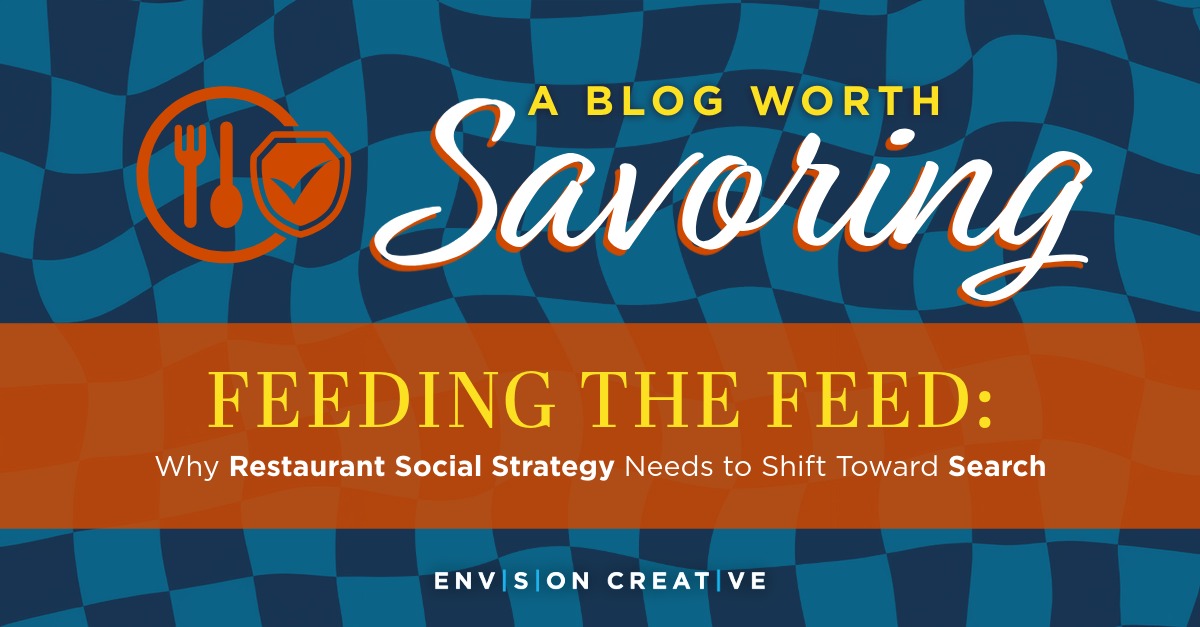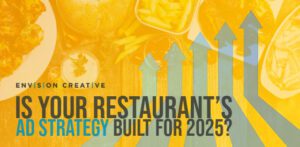The rules of social media have changed, yet again!
In 2025, your feed is no longer just for your followers. It is for search engines.
TikTok is limiting the number of hashtags creators can use. Instagram has quietly confirmed that hashtags are no longer significantly impacting reach (HubSpot, 2024). Moreover, Google is now indexing public Instagram posts from professional accounts, including captions, hashtags, and all related content, making them eligible to appear in Google and Bing search results.
That changes the game.
Your feed is no longer just a highlight reel. It is a searchable extension of your brand. For restaurants, this shift presents a significant opportunity to get discovered, stay visible, and guide hungry customers directly to the table.
How Discovery Is Leading to Revenue
Let’s be honest! One of the biggest hesitations restaurants have around marketing is that it can be tough to draw a straight line from a social post to a sale. However, the data says otherwise.
Google reports that mobile searches including the phrase “can I buy ___ near me” have increased over 500% in the past few years (Think with Google). These are not passive scrolls; they are high-intent moments. Seventy-six percent of users who search for something nearby visit a business within 24 hours, and 28% of those visits lead to a purchase.
That is your table, your patio, your happy hour. However, only if your brand appears in the search results on Google and social media. Visibility in the right moment is ROI. It is not always instant, and that is okay.
Social SEO Is the New Table Stakes
Social platforms are becoming search engines in their own right. If your current strategy only revolves around cheeky, relatable captions and trendy audios, you are missing the moment.
Captions now do double duty. Yes, they should reflect your voice, but they also need to communicate clearly and effectively. Think less “chef’s kiss,” more “house-made chilaquiles served weekends on our East Austin patio.” According to Sprout Social (2024), captions that include relevant search terms tend to have higher engagement and save rates.
Hashtags have not disappeared, but their role has definitely evolved. Instagram now recommends using only a handful of genuinely relevant hashtags, not only for reach, but for relevance. According to Metricool (2025), hashtags are becoming increasingly important for search engine visibility, helping platforms like Google and Bing categorize and index public posts more effectively. Their purpose is now more organizational than promotional.
Moreover, here is something most brands are still sleeping on: alt text. Search engines can now index the alt text and even image file names on Meta platforms, like Instagram and Facebook. That means the photo of your sizzling fajitas should be tagged as “steak-fajitas-retaurantname-austin.jpg,” not “image0127.” It is a small detail, but one that boosts both visibility and accessibility.
Think of Instagram Like Your Website Now
Your feed should work like a landing page. If someone searches your restaurant and lands on your Instagram, are they seeing your location? Your menu? What is it like to dine there?
If your content is visually strong but textually vague, you are missing conversions. Most diners want fast answers: What do you serve? Where are you located? Are reservations available? Aesthetics is not enough; function matters too.
What Your Posts Should Actually Be Doing
It means your content has to do more than look good. It has to communicate clearly and strategically. Yes, short-form video still leads in engagement. Reels alone account for 50% of time spent on Instagram (Felene, 2024), and videos under 15 seconds tend to perform best. That is not going away, and TikTok/Instagram Reels are only becoming more prioritized by the platforms. Keeping video in your mix is still essential; it just needs to work smarter for search, in addition to “stopping the scroll.”
Discoverability now depends on your captions, image file names, alt text, and visual consistency.
As searchability expands, static visuals paired with intentional, well-written captions can drive meaningful visibility. Google is indexing public posts, meaning that photos like “just another Tuesday taco drop” can now rank for terms like “best happy hour tacos Austin” if the copy is written smartly. It is not just about what your audience sees! It is about what they are searching for.
Is Your Feed Working Hard Enough?
We get it, alright! Marketing for restaurants is a lot! You are expected to hop on trends, create consistent content, optimize for algorithms, and now? You are supposed to write captions on social media with search engines in mind?
The rules are shifting, but the old ones did not go away. You still need craveable photos, engaging videos, and regular posting. Now you are laying SEO on top of that. It is not impossible, but it is a lot to manage when you are also, you know, running a restaurant.
That is where we come in.
At Envision Creative, we help restaurants develop innovative, sustainable content strategies that not only look good but also get found. We turn your social content into a discovery tool that supports your bottom line.
Let’s talk about what your feed could be doing better.
Schedule a strategy session with our Director of New Business, Ryan, and we’ll walk through what is working, what is missing, and how we can help you show up on both the feed and search bar.
Moreover, if you have not read it yet, check out our blog on paid media strategy, “Clicks Don’t Fill Tables: Why Restaurants Are Rethinking Paid Media in 2025,” for a fresh perspective on how paid strategy is evolving alongside organic search.
-FINAL(01-00)-White&Blue-01.svg)




